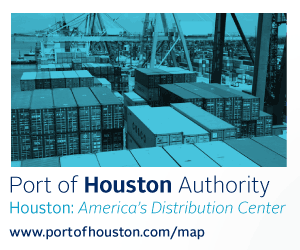|
Maersk Line CEO Soren Skou recently said a "leap frogging move" was called for to raise port productivity levels, noting that something like the shipping industry version of the "double-decker jetway" must be developed in order to handle super sized ships, according to Drewry Maritime Research.
Skou complained that although vessel sizes on the Asia-Europe trades have, for example, doubled, port productivity has not. Ship time spent in port per voyage has increased 50 percent from 12 to 18 days, the analysts said.
The researchers found that the increase in port productivity does not match the increase in ship sizes, and time in port increases as a result. For example, a 19,000-TEU vessel is almost 50 percent bigger than a 13,000-TEU ship, but the berth-moves-per-day is only 20 percent higher. Although overall berth productivity does increase with ship size, it does not increase in direct proportion, reports a recent issue of Container Insight.
The analysts said that one of the main reasons for this disparity is that the length of vessels has not increased linearly with the increase in TEU intake — rather, the ships have gotten wider and deeper, with containers stacked higher. For example, an 18,300-TEU Maersk Triple E vessel is only 25 percent longer than the 7,400-TEU Regina Maersk class, yet it carries 150 percent more boxes.
This means that the number of gantry cranes deployed cannot be increased in direct proportion to increased ship sizes. It also means that the cost and availability of labor in some locations restricts the number of additional cranes that can be deployed on each ship. Drewry said it is also true that handling ever larger ships involves using gantry
|
cranes that are higher and have longer reaches, meaning that the trolley has to physically travel further per cycle between the quay and the ship’s hold, making it harder to maintain the number of crane moves per hour.
The counter argument, Drewry says, is that bigger ships tend to have more containers discharged and loaded to/from each hold so there is less picking and choosing required and fewer crane shuffles.
Drewry says that berth productivity of 75 to 150 moves per hour is in line with the global actual average for 2014 as assessed by the JOC. There is a general consensus in the industry that 3,000-3,500 moves in 24 hours is a realistic top end performance for a large terminal handling large ships.
Drewry researchers assert that meeting the new port productivity demands of shipping lines requires evolutionary change. For example, in order to meet the industry target of 6,000 moves in 24 hours demanded in 2011 by Maersk Line’s then CEO, Eivind Kolding — a 19,000-TEU vessel would need to have 8 cranes deployed, each working at 35-moves-per-hour instead of 25, generating a berth productivity of 280 moves-per-hour (not just once, or now and again, but all the time, each time, every time).
In conclusion, Drewry says, bigger ships are spending proportionately more of a round voyage in port than their predecessors, and meeting carriers’ demand for higher port productivity requires a fundamental change in the way that containers are handled. Since innovation is always risky and costly, who is going to pay to design, test, develop and implement the "double-decker jetway" for ports?
|





